What is Zoning in New Zealand: Understanding Land Use Planning Fundamentals
 By
Trent Bradley
·
11 minute read
By
Trent Bradley
·
11 minute read

Zoning is the foundation of land use planning in New Zealand, determining what activities can occur on different pieces of land and under what conditions. For property developers, investors, and landowners, understanding zoning is essential for identifying opportunities, assessing development potential, and navigating regulatory requirements. This comprehensive guide explains what zoning is, how it works in New Zealand, and why it matters for property development success.
Table of Contents
- Defining Zoning in the New Zealand Context
- How Zoning Works in Practice
- Common Zone Types Across New Zealand
- Key Zoning Controls and Standards
- Understanding Development Potential
- Regional Variations in Zoning Approaches
- Strategic Planning and Zoning Evolution
- Zoning and Property Development Success
- Common Zoning Questions and Misconceptions
- Working with Zoning Complexity
- Zoning and Development Finance
- Frequently Asked Questions
Key Takeaways
- Zoning is a regulatory system under the Resource Management Act 1991 dividing land into zones with specific rules controlling permitted uses, building requirements, and development standards—every piece of New Zealand land is assigned to a zone category determining what can be built without consent
- Activity classification determines consent requirements: Permitted activities complying with all rules require no consent, Controlled/Restricted Discretionary activities require consent but have specified assessment scope, Discretionary activities face full council discretion, and Non-Complying/Prohibited activities face additional tests or complete restrictions
- Common zone types include Low/Medium/High Density Residential zones (varying density from single houses to apartments), Business/Commercial zones (local centres to intensive city centres), Industrial zones (light and heavy), Rural zones (production and lifestyle), and Conservation/Recreation zones protecting environmental and community values
- Key zoning controls significantly influence development potential: building height limits (8-10m residential, unlimited some commercial), site coverage restrictions (35-60% residential), boundary setbacks protecting privacy and amenity, car parking requirements, and landscaping provisions
- New Zealand operates a plan-based zoning system where each territorial authority develops unique district plans—Auckland's Unitary Plan, Wellington's heritage-focused approach, and Christchurch's post-earthquake framework differ substantially, creating regional variation requiring local expertise
- Zoning evolution occurs through regular district plan reviews, specific plan changes, National Policy Statement implementation, and growth management planning—understanding strategic directions helps identify sites likely experiencing favorable zoning changes creating development opportunities
Defining Zoning in the New Zealand Context
Zoning is a regulatory system that divides land within territorial authority boundaries into different zones, each with specific rules about permitted land uses, building requirements, and development standards.
Purpose of Zoning: Zoning serves multiple purposes including managing land use conflicts, protecting environmental values, ensuring adequate infrastructure provision, maintaining community character, and promoting sustainable development outcomes. The system aims to balance private property rights with broader community interests and environmental protection.
Legal Framework: In New Zealand, zoning operates under the Resource Management Act 1991 (RMA), which empowers territorial authorities (city and district councils) to prepare district plans containing zoning provisions. These plans have legal force and control land use activities within council boundaries.
Plan-Based System: Unlike some countries with standardized zoning codes, New Zealand operates a plan-based system where each territorial authority develops its own district plan with unique zoning categories and rules. This creates local variation but allows for location-specific responses to community needs and environmental conditions.
Effects-Based Approach: New Zealand's zoning system emphasizes managing environmental effects rather than simply controlling land uses. This effects-based approach enables more flexible responses to development proposals while maintaining environmental protection and community amenity.
Integrated Planning: Zoning integrates with other planning instruments including regional policy statements, national policy statements, and strategic plans to create comprehensive land use management frameworks that address multiple scales of planning consideration.
How Zoning Works in Practice
Understanding how zoning functions in practice helps property owners and developers navigate the system effectively and identify opportunities for development.
Zone Identification: Every piece of land within New Zealand is assigned to a specific zone category identified in the relevant district plan. Zone boundaries are mapped precisely using geographic information systems and legal survey data to provide certainty about applicable rules.
Rule Application: Once a zone is identified, specific rules apply including permitted activities, building standards, density controls, and performance requirements. These rules determine what can be done on the land without consent and what activities require resource consent approval.
Activity Classification: District plans classify all potential land use activities according to their environmental effects and community acceptability. Activities are typically classified as permitted, controlled, restricted discretionary, discretionary, non-complying, or prohibited.
Consent Requirements: Activities that don't comply with zone rules or aren't specifically permitted typically require resource consent. The consent process involves application preparation, assessment against plan criteria, and decision-making by council commissioners or staff under delegated authority.
Plan Implementation: Councils implement zoning through development control, building consent processes, compliance monitoring, and enforcement activities. Implementation ensures that development outcomes align with zoning objectives and community expectations.
Common Zone Types Across New Zealand
While district plans vary between councils, most include similar zone categories that address common land use planning needs.
Residential Zones: Residential zones accommodate housing and related activities with varying density provisions and design requirements. Common residential zone types include:
Low Density Residential zones typically permit single houses with generous gardens and landscaping. These zones maintain suburban character while accommodating some intensification through sleep-outs, granny flats, or home-based businesses.
Medium Density Residential zones enable increased housing density through townhouses, duplexes, and small apartment buildings. These zones balance intensification objectives with neighbourhood character protection through specific design standards.
High Density Residential zones permit intensive housing development including apartment buildings and mixed-use developments. These zones typically occur in urban centres with good transport access and commercial services.
Business and Commercial Zones: Business zones accommodate commercial activities serving local and regional needs with varying scales and character requirements:
Local Centre zones serve neighbourhood convenience needs with smaller shops, cafes, and services. These zones often permit residential development above commercial activities.
Town Centre zones accommodate larger retail developments, professional services, and community facilities serving broader catchments. Development rules focus on street interface quality and pedestrian amenity.
City Centre zones enable intensive commercial development including offices, retail, entertainment, and high-density residential uses. These zones typically have minimal density restrictions but extensive urban design requirements.
Industrial Zones: Industrial zones accommodate manufacturing, distribution, processing, and service industries with performance standards managing environmental effects:
Light Industrial zones permit cleaner industrial activities including manufacturing, warehousing, and trade services. These zones may allow some commercial activities and have stricter environmental performance standards.
Heavy Industrial zones accommodate intensive industrial activities including manufacturing, processing, and hazardous substance storage. These zones have more permissive environmental standards but stricter separation requirements from sensitive activities.
Rural Zones: Rural zones manage farming, conservation, and rural living activities while protecting productive land and rural character:
Rural Production zones prioritize farming and forestry with limited residential development and strict subdivision controls. These zones aim to protect productive soils and prevent rural fragmentation.
Rural Living zones enable larger residential lots in rural settings while maintaining agricultural potential and rural character. Minimum lot sizes are typically larger than urban zones but smaller than production zones.
Open Space and Recreation Zones: These zones protect parks, reserves, sports facilities, and recreational areas for community use while permitting complementary activities like clubrooms and maintenance facilities.
Conservation and Environmental Zones: These zones protect significant natural areas, water bodies, and ecological systems through restrictive development controls and environmental protection requirements.
Key Zoning Controls and Standards
Zoning effectiveness depends on various controls and standards that shape development outcomes and manage environmental effects.
Building Height Limits: Height controls manage building scale, visual effects, and sunlight access. Height limits vary significantly between zones from 8-10 metres in residential areas to unlimited in some commercial zones, often with recession plane requirements to protect neighbour amenity.
Site Coverage and Building Density: Coverage controls limit the proportion of sites covered by buildings to ensure adequate outdoor space, landscaping, and stormwater infiltration. Density controls may also specify floor area ratios or dwelling unit limits per hectare.
Boundary Setbacks: Setback requirements ensure adequate spacing between buildings and property boundaries to protect privacy, enable landscaping, provide access, and maintain neighbourhood character. Setbacks vary by zone type and boundary location.
Car Parking and Access: Most zones require minimum car parking provision based on activity type and intensity. Parking requirements significantly influence development costs and site layout while reflecting transport planning objectives and community expectations.
Landscaping and Open Space: Zoning rules typically require landscaping provision including tree planting, garden areas, and open space to enhance visual amenity, provide recreational opportunities, and manage environmental effects.
Activity-Specific Controls: Different activities may have specific performance standards addressing noise levels, operating hours, customer numbers, storage requirements, or environmental effects to ensure compatibility with surrounding land uses.
Understanding Development Potential
Assessing development potential requires comprehensive analysis of all applicable zoning provisions and their practical implications for specific sites.
Permitted Development Rights: Understanding what can be developed without resource consent provides baseline development potential and identifies opportunities for efficient, low-risk development approaches.
Consent Pathway Analysis: For development requiring consent, understanding activity classification and assessment criteria helps predict consent likelihood, processing timeframes, and potential conditions or restrictions.
Design Constraint Assessment: Building controls, setbacks, height limits, and other standards significantly influence building design options and development efficiency. Comprehensive constraint analysis enables optimal design development.
Infrastructure Requirements: Zoning rules often specify infrastructure standards for subdivision and development including road construction, utility provision, and stormwater management. Infrastructure requirements significantly influence development costs and feasibility.
Future Development Potential: Understanding strategic planning directions and potential zoning changes helps assess long-term development potential and investment prospects beyond current zoning provisions.
Regional Variations in Zoning Approaches
New Zealand's plan-based zoning system creates significant variation between different councils and regions.
Auckland's Approach: New Zealand's largest city has developed sophisticated zoning systems including residential intensification zones, business area classifications, and comprehensive overlay systems. Auckland's Unitary Plan represents one of the most complex zoning frameworks in New Zealand.
Wellington Region Systems: Wellington's councils have developed zoning approaches that address the region's geographic constraints, earthquake risks, and heritage values. Height and density controls often reflect topographical and infrastructure limitations.
Christchurch Post-Earthquake Planning: Canterbury's planning framework incorporates earthquake recovery objectives with streamlined zoning for residential and commercial rebuilding. The framework emphasizes resilience and efficient development processes.
Provincial Council Approaches: Smaller councils often have simpler zoning systems with fewer zone categories but may include specific provisions addressing local characteristics like rural-residential development or tourism activities.
Rural District Considerations: Rural territorial authorities typically emphasize agricultural protection, rural character maintenance, and natural hazard management through zoning provisions that reflect rural community priorities.
Strategic Planning and Zoning Evolution
Zoning systems evolve continuously through strategic planning processes that respond to growth pressures, policy changes, and community priorities.
Growth Management Planning: Councils develop growth strategies that identify future urban development areas and guide zoning changes to accommodate population growth and housing demand while managing infrastructure investment.
Plan Reviews and Changes: District plans undergo regular comprehensive reviews and specific plan changes that can significantly alter zoning provisions. Understanding review cycles helps identify potential opportunities and threats.
National Policy Implementation: National Policy Statements on urban development, renewable energy, and environmental protection influence zoning evolution and create requirements for plan changes and development opportunity creation.
Community Planning Initiatives: Structure planning, masterplanning, and community consultation processes often precede zoning changes and provide opportunities for stakeholder input into zoning evolution.
Infrastructure-Led Planning: Major infrastructure investments including transport improvements, water system upgrades, and digital connectivity often drive zoning changes that create new development opportunities.
Zoning and Property Development Success
Understanding zoning implications is essential for property development success in New Zealand's regulatory environment.
Opportunity Identification: Zoning knowledge helps identify development opportunities including sites with favorable zoning, potential for intensification, or likely future zoning improvements.
Feasibility Assessment: Comprehensive zoning analysis forms the foundation of development feasibility assessment by identifying development potential, consent requirements, and regulatory constraints or opportunities.
Risk Management: Understanding zoning rules and potential changes helps manage development risks including consent delays, unexpected restrictions, or policy changes that could affect project viability.
Investment Strategy: Zoning analysis informs investment strategies including site selection criteria, development timing decisions, and portfolio management approaches that optimize returns within regulatory frameworks.
Professional Engagement: Complex zoning environments require professional planning expertise to navigate effectively and identify optimal development approaches within regulatory constraints.
Common Zoning Questions and Misconceptions
Property owners and developers often have questions or misconceptions about zoning that can lead to poor decisions or missed opportunities.
Zoning Certainty: While zoning provides regulatory frameworks, it doesn't guarantee development outcomes. Zoning establishes potential rather than certainty, with actual development outcomes depending on detailed design, consent processes, and market conditions.
Zone Boundary Flexibility: Zone boundaries are precisely mapped and legally defined. Properties cannot simply be "rezoned" through application processes - zoning changes require formal plan change processes with public consultation and council approval.
Cross-Zone Development: Properties spanning multiple zones must comply with all applicable zone requirements, which can create complex compliance requirements and design constraints requiring specialist planning input.
Historic Rights and Existing Use: Properties with established non-complying activities often have continuing use rights, but expansions or changes may trigger compliance with current zoning rules requiring careful legal and planning analysis.
Interpretation Issues: Zoning rules sometimes involve interpretation complexity requiring professional planning expertise or formal council clarification through pre-application processes or consent applications.
Working with Zoning Complexity
Successfully navigating zoning complexity requires systematic approaches and professional expertise.
Professional Planning Advice: Engaging qualified planning consultants provides essential expertise in zoning interpretation, opportunity identification, and regulatory navigation that significantly improves development success prospects.
Council Consultation: Pre-application consultation processes enable discussion of zoning interpretation and development approaches before formal applications, often identifying solutions and reducing risks.
Comprehensive Research: Thorough zoning research should examine current rules, strategic planning directions, and recent council decisions to understand the full regulatory context affecting development sites.
Industry Networks: Professional development networks, industry associations, and peer relationships provide valuable insights into zoning trends, interpretation issues, and successful navigation strategies.
Zoning and Development Finance
Development finance providers require comprehensive understanding of zoning implications for development feasibility and risk assessment.
At Luminate Finance, we understand that zoning forms the foundation of development potential assessment and work closely with developers to analyze zoning implications for development feasibility and financing availability.
Our extensive experience across New Zealand's diverse zoning environments enables us to provide valuable insights into zoning opportunities, constraints, and optimization strategies that support development success.
We regularly review zoning compliance and development potential during feasibility analysis, ensuring development proposals align with regulatory frameworks while maximizing development potential within zoning constraints.
Our comprehensive approach includes assessment of current zoning provisions, strategic planning implications, and consent pathway analysis that influences development feasibility and financing terms.
Through our involvement in developments across different zones and councils, we've developed deep understanding of how zoning systems work in practice and their implications for development success and investment returns.
Frequently Asked Questions
How do I find out what zoning applies to my property?
Access your council's online GIS (Geographic Information System) mapping tool showing zoning for any address—most New Zealand councils provide free public access through their websites under "Maps" or "Planning" sections. Input your property address to view: base zone classification, applicable overlays (heritage, natural hazards, ecological), height limits and density controls, and special planning areas. Download relevant district plan chapters covering your zone for detailed rules. For comprehensive information, request a LIM (Land Information Memorandum) from your council ($200-$400) providing: zoning details, consent history, known hazards, and plan changes affecting your property. For complex sites or development assessment, engage planning consultants ($2,000-$5,000) providing professional zoning analysis, development potential assessment, and consent pathway recommendations.
Can I change the zoning on my property to allow different development?
Yes, but changing zoning requires formal plan change processes, not simple applications. Private plan changes cost $100,000-$500,000+ and take 12-24+ months involving: comprehensive planning assessment justifying change, technical reports (traffic, infrastructure, environmental), public notification and submission period (expect opposition), council hearings and decision-making, and potential appeals to Environment Court. Plan changes succeed when demonstrating: strong alignment with strategic growth directions, adequate infrastructure capacity, minimal adverse effects on neighbours and environment, and consistency with district plan objectives. Success rates vary dramatically—changes aligned with council growth strategies may succeed, while changes conflicting with strategic directions typically fail. Most developers find acquiring appropriately-zoned sites more economical than pursuing plan changes, which only make sense for large landholdings (5+ hectares) with strong planning justification.
What's the difference between Permitted, Discretionary, and Non-Complying activities?
Permitted activities comply with ALL district plan rules and require NO resource consent—development proceeds directly to Building Consent stage providing certainty and speed (2-4 months total). Discretionary activities don't comply with some rules and require resource consent with full council discretion over approval and conditions—consent processing takes 4-8 months with moderate decline risk (10-20%). Non-Complying activities breach multiple rules or involve fundamentally incompatible uses requiring demonstration that: adverse effects will be minor (difficult standard), OR activity is consistent with district plan objectives despite rule breaches. Non-Complying consents face 40-60% decline rates, cost $20,000-$100,000+ in professional fees, and take 6-18+ months processing. Strategy: modify designs achieving Permitted status whenever possible, accept Discretionary status when Permitted is impossible, and avoid Non-Complying status unless strong planning case exists.
How do building height limits and setbacks affect my development potential?
Height limits and setbacks directly determine building envelope and developable area. Height limits vary: 8-10m in residential zones (typically 2-3 storeys), 12-18m in mixed-use zones, unlimited in some city centres. Setbacks typically require: 1.5-3m from side boundaries, 3-6m from rear boundaries, 4-8m from street frontages. Calculate actual building footprint: 600m² site with 3m all-round setbacks = 486m² potential building footprint (600 - (2×3m×width + 2×3m×length)). With 40% site coverage limit, maximum building = 240m². Add 10m height limit = 240m² footprint × 2.5 storeys = 600m² total floor area. Recession planes further limit building height near boundaries—buildings must fit within angled planes (typically 45° residential, steeper in commercial zones) ensuring sunlight access to neighbours. Optimize development through: carefully positioning buildings within setbacks, designing to maximum height while respecting recession planes, and utilizing multi-storey development within height envelopes.
What are zoning overlays and how do they affect development?
Zoning overlays add additional controls beyond base zone rules, applying to specific areas with special characteristics or sensitivities. Common overlays include: Heritage overlays requiring consent for alterations/demolition of heritage buildings and archaeological assessment for sites with pre-1900 occupation; Natural hazard overlays (flooding, coastal erosion, geotechnical) requiring specialist reports, floor level minimums, and foundation engineering; Ecological overlays protecting indigenous vegetation and requiring ecological assessments, vegetation retention, and offset planting; and Airport noise contours restricting noise-sensitive uses and requiring acoustic insulation. Overlays can dramatically affect development—properties in heritage areas may face $10,000-$30,000 additional costs for heritage assessments and conservation methods, flood overlays may require floor levels 1-2m above ground adding $50,000-$150,000 foundation costs, and ecological overlays may prevent development on 20-40% of site area. Always check council GIS for all applicable overlays before purchasing development sites.
Does zoning guarantee I can develop my property to maximum potential?
No—zoning establishes development potential rather than guarantees outcomes. Achieving maximum zoned development requires: complying with ALL applicable rules (height, setbacks, coverage, parking, landscaping), obtaining resource consent for any non-complying aspects (typically 4-8 months, uncertain outcomes), meeting infrastructure capacity requirements (water, wastewater, stormwater, roads), demonstrating acceptable effects on neighbours and environment, and satisfying urban design requirements in many zones. Additionally, Building Code compliance, engineering feasibility, and market viability affect actual development outcomes. Example: zone theoretically permits 8 dwellings per site, but setback requirements, parking needs, infrastructure constraints, and design quality expectations may only enable 5-6 practical dwellings. Always engage planning consultants conducting comprehensive feasibility analysis translating zoned potential into realistic, achievable development yields accounting for all regulatory and practical constraints affecting specific sites.
Ready to understand and leverage zoning opportunities with expert development finance support? Contact Luminate Finance today to discuss how our comprehensive zoning knowledge can help optimize your development potential within New Zealand's regulatory frameworks.

Trent Bradley
Trent Bradley is a New Zealand financial advisor specializing in property-backed finance and investment consulting. With over 26 years of experience running his mortgage broking business, he has helped wholesale investors access high-yield property-backed loan opportunities. For the past 12 years, Trent has led Luminate Finance, a New Zealand finance company dedicated to connecting investors with secure property investment solutions.






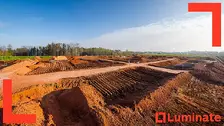












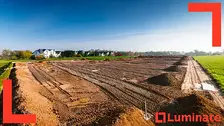
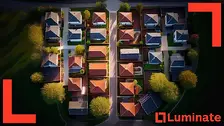






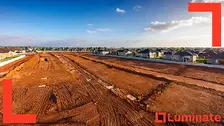

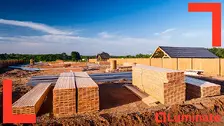



.png?//48413319.fs1.hubspotusercontent-ap1.net/hubfs/48413319/Featured%20images%20(14).png&width=247&height=126&name=Featured%20images%20(14).png)




